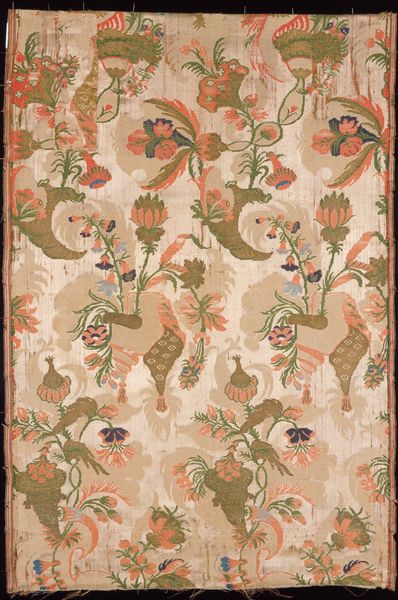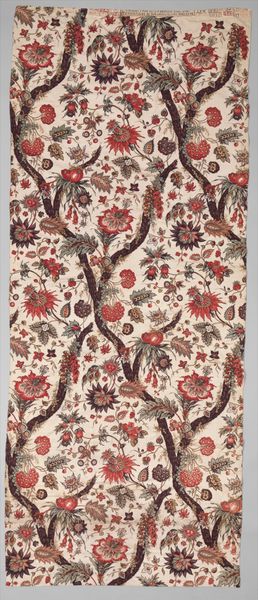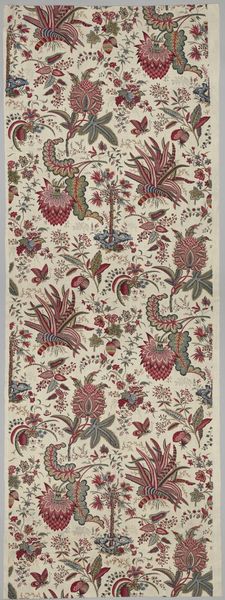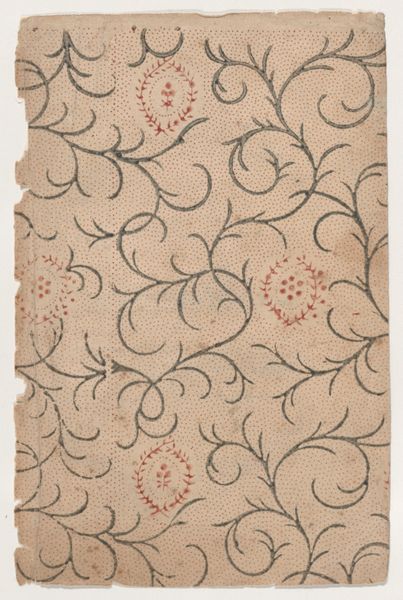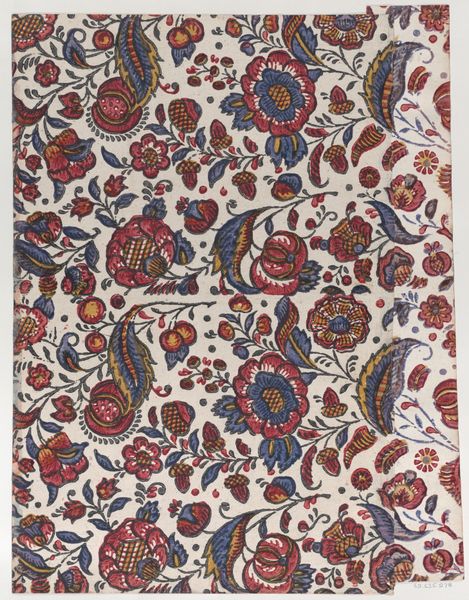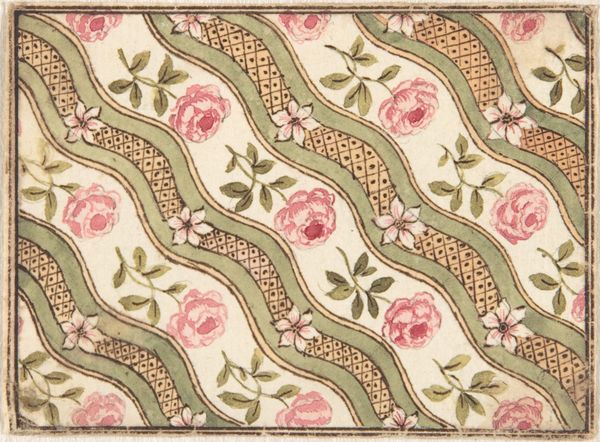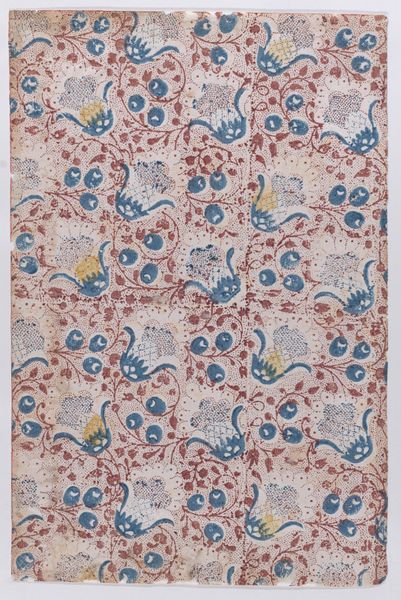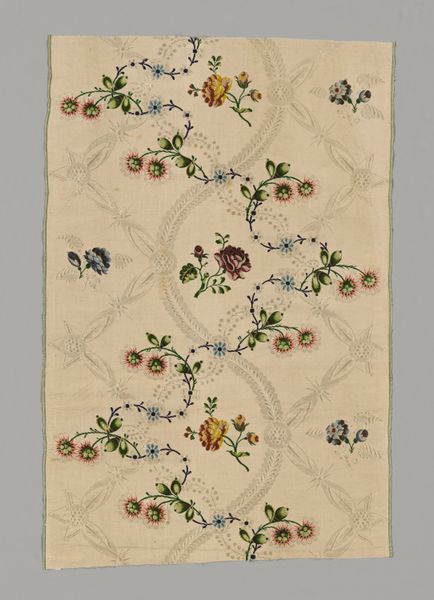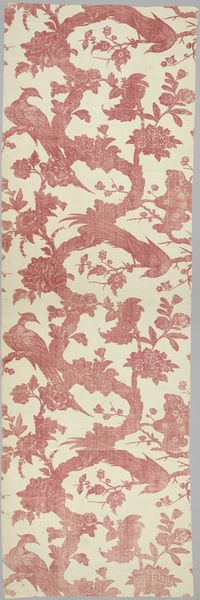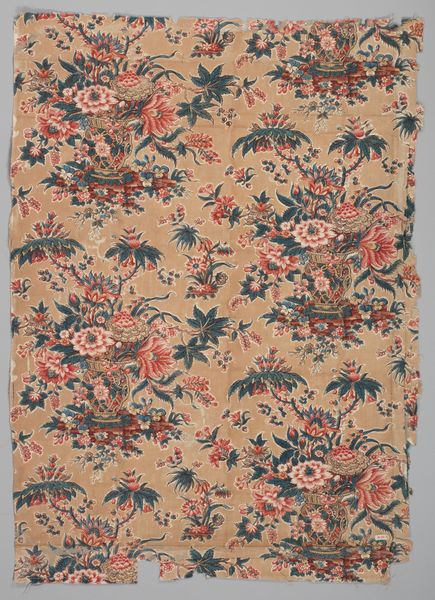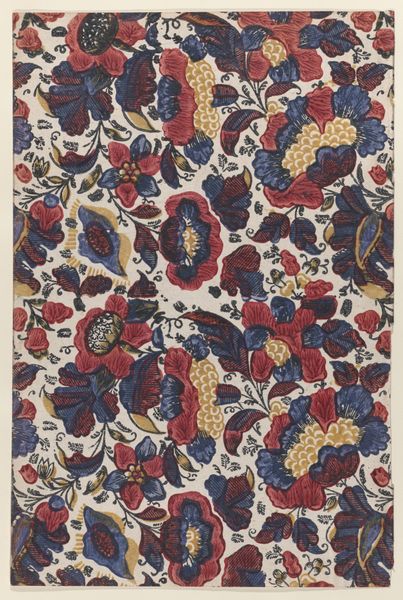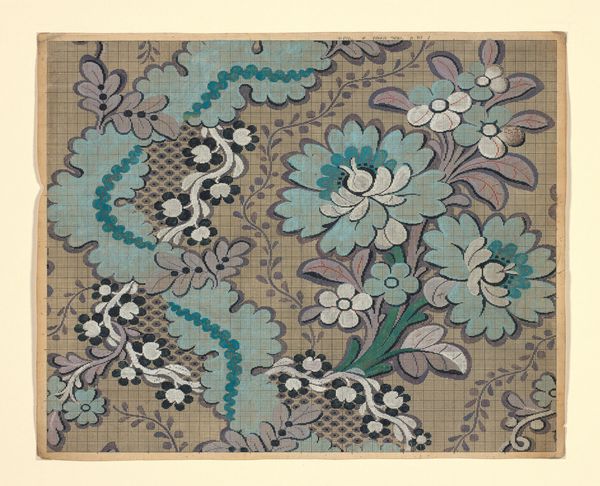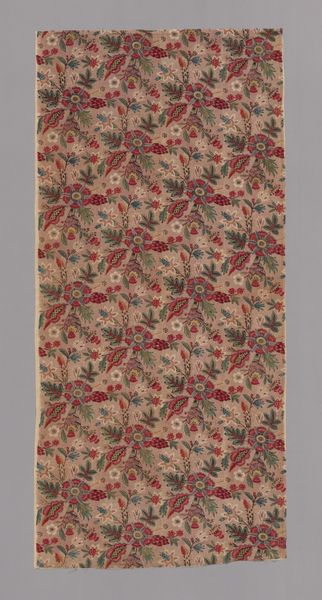
drawing, print
#
drawing
# print
#
pattern
#
folk-art
#
decorative-art
Dimensions: overall: 71.1 x 46 cm (28 x 18 1/8 in.)
Copyright: National Gallery of Art: CC0 1.0
Curator: Wow, that's like a garden of earthy delights gone wild. It feels warm and handmade. Editor: Indeed! We're looking at "Colcha," a print and drawing attributed to Majel G. Claflin and thought to have been created between 1935 and 1942. It's an example of decorative and folk art that seems to imitate needlework motifs. Curator: It definitely has that old-fashioned quilt vibe, but also something playful, with those...are they deer doing a jig? The colors feel both muted and kind of optimistic. Editor: Precisely. "Colcha," named after a type of embroidery traditionally found in New Mexico and the Southwest, draws heavily from this cultural practice, echoing the ways in which such works reflect local flora, fauna, and spiritual themes. The deer figures, for example, aren't just decorative, they’re likely carriers of symbolic meaning. Curator: I can imagine families huddled together, stitching these during long winter nights, passing down stories along with the stitches. It also reminds me of those beautifully illustrated children's books – something innocent yet secretly profound. Editor: It brings up an interesting point about the romanticization of folk art, right? Especially within institutions. How do we balance the genuine beauty and cultural value of works like "Colcha" with a critical look at how these traditions are often presented through a Western lens? Are we really seeing an authentic slice of life, or a curated version intended to reinforce certain narratives? Curator: It makes me want to trace the motifs in the air with my fingers and breathe life into it all. It definitely has that magical storyteller energy. Editor: Absolutely, and perhaps by recognizing its historical position—the forces that shape both its creation and its display—we can gain a deeper appreciation for not just its beauty, but its layered complexities. It's not merely pretty decoration; it is a repository of stories, skill, and the subtle politics of cultural representation. Curator: Agreed, it has many layers to explore. It’s a visual poem about history, resilience, and perhaps a touch of mischief, wouldn’t you say? Editor: Yes, a beautiful piece full of nuances, where art meets history and culture, inviting questions as much as offering aesthetic delight.
Comments
No comments
Be the first to comment and join the conversation on the ultimate creative platform.
